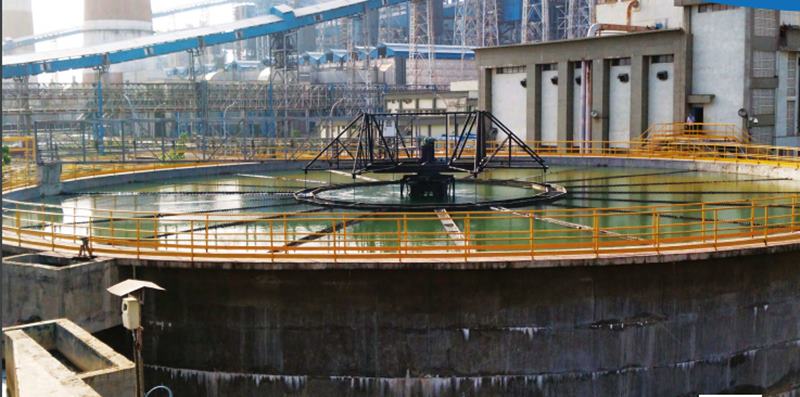Water stress is an urgent reality in India. Amongst water intensive industries in India, coal power plants especially are huge guzzlers of water and are responsible for about 70 per cent of the total freshwater withdrawal by all industries in India.
Almost half (48 per cent) of the existing coal-power fleet in India are located in water-scarce regions. Despite the deadline of December 2017 to comply with water consumption norms, most of the freshwater coal power plants continue to defy the rules. These are some of the findings of a recent study titled ‘Water-Inefficient Power: Implementing Water Norma and Zero Discharge in India’s Coal-Power Fleet’ released today by Centre for Environment and Science (CSE), a New Delhi-based environmental research organisation.
As per the report, most of the power plants in states such as Madhya Pradesh, Maharashtra, and Uttar Pradesh do not comply with the specific water-consumption norms that were introduced by the Ministry of Environment, Forest and Climate Change (MoEF&CC) in 2015 in order to regulate irrational use of water in coal power plants.
“Water norms are highly neglected by the environment ministry and in such a scenario about 50 per cent power plants continue to flout them even when the norms are lax,” stated the report.
CSE e-releases latest report 'Water Inefficient Power' at the #webinar and discussion on Water-use in #India's #Coal Power Sector.
— CSEINDIA (@CSEINDIA) August 26, 2021
Watch the #livestreaming here: https://t.co/QXx6HTtMNu
Learn more abt the webinar: https://t.co/2lAvNL3TXp
Download report: https://t.co/kC47v6Bj5I pic.twitter.com/77FO3KAQjq
The research organisation went on to point out that the Indian coal power plants with cooling towers consume twice as much water as their global counterparts. Globally, a 500 MW super critical plant withdraws 2.52 cubic metre per megawatt hour (m3/MWh) water while in India a similar power plant withdraws double the amount of water at 4 m3/MWh.
“Coal-power plants consume huge amounts of water. With growing water stress in several regions of India, it is vital that they use water judiciously,” read the report.
The study also pointed out that many Indian power plants with inefficient water consumption practices and older technologies tend to have much higher specific water consumption and consume significant amounts of water. This is at a time when several parts of India already face severe water crisis.
Coal-power plants in water-scarce regions such as Nagpur and Chandrapur in Maharashtra; Raichur in Karnataka; Korba in Chhattisgarh; Barmer and Baran in Rajasthan; Khammam and Kothagudem in Telangana and Cuddalore in Tamil Nadu already face the brunt of water scarcity.
The crisis is especially aggravated during summers when there is additional demand for power due to increased cooling needs, adding pressure on coal power plants. Monsoon failure and drought also add to the stress.
The non-profit recommended that it is important that these plants comply with the specific 2015 water-consumption norms to regulate irrational use of water in coal power plants. The deadline to meet these water norms was December 2017. However, several coal-based power plants in India continue to defy the deadline and flout the rules.
Also Read: 7 states, 17 major incidents of coal ash mismanagement in India in past one year: Report
What are 2015 water-consumption norms?
In December, 2015, the environment ministry notified water standards for coal power plants. Plants installed before 2017 were required to meet a norm of 3.5 m3MWh and plants installed after 1 January 2017 had to meet 2.5 m3/MWh along with zero liquid discharge. The norms did not make any distinction between freshwater-based and seawater-based plants in the December 2015 notification.
In June 2018, however, MoEF&CC issued an amendment to its 2015 notification (see table: Specific water consumption norms 2015 and subsequent amendment). In this, the water consumption limit of 2.5 m3/MWh for new plants—installed after 1 January 2017—was revised to three m3/MWh.
Thus, the revised water norms mandate only freshwater-based plants to meet the norm of 3.5 or three m3/MWh and seawater-based plants are exempted from the norms. All freshwater-based once-through cooling plants are additionally required to install cooling towers and subsequently achieve the norm of 3.5 m3/MWh.
“Ash water discharge is one of the most common and polluting discharges from thermal power plants. Often discharge is intentional and not accidental, but even if accidental, it is still a violation,” said Shripad Dharmadhikary, coordinator, Manthan Adhyayan Kendra, centre to monitor water and energy issues, during the virtual launch of the report.
He suggested restoring the original more stringent norm of 2.5 m3/MWh for plants after 2016.
Why meeting water use norms is critical?
As coal has the largest share (60 per cent) in electricity generation in the country, it is estimated that coal based power plants will remain to be the mainstay of power generation at least in this decade.
If a large capacity power plant (2,980 MW) operating at 70 or 90 per cent load reduces its water consumption rate from 4 m3/MWh to 3m3/MWh, the plant will save on a respectable 18-23 million cubic metres of water a year, highlighted the CSE report.
As per the CSE’s 2015 study Heat on Power, Indian power plants were estimated to withdraw around 22 billion cubic metres of water, which is over half of India’s domestic water requirement.
Way forward
Some of the recommendations by CSE to tackle high water consumption by coal-based power plants include:
- Environment ministry and CPCB (Central Pollution Control Board) must review implementation of water consumption norms and issue clear deadlines to non-complying plants.
- Environment ministry and regulatory authorities must prioritise implementation of norms in water scarce regions; non-complying plants (in states such as Madhya Pradesh) should be issued directions/notices to immediately comply.
- The ministry must prioritise or fast track decommissioning of old and inefficient once-through cooling plants.
- Robust and effective policy needed to encourage use of treated municipal sewage to reduce freshwater consumption in power plants.
Also Read: Coal ash: ‘White prawns turned into ash prawns; fishers pushed into poverty’


















